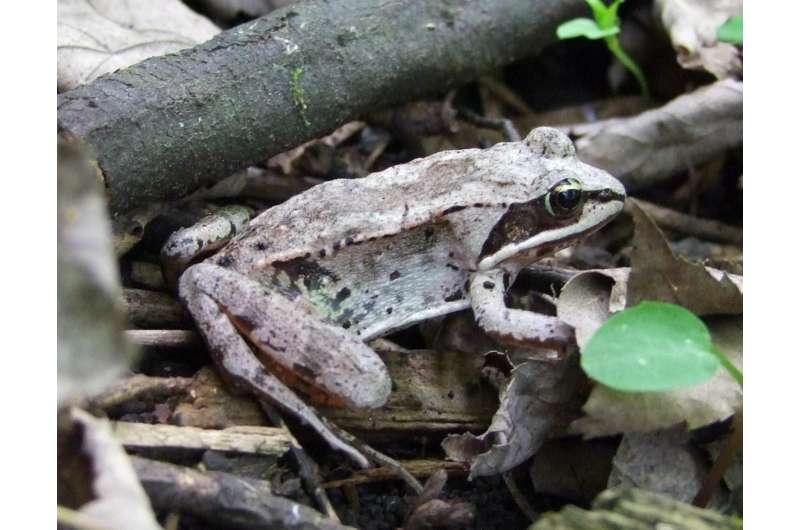August 25, 2016 report
Behavioral phenotypes may provide a way to identify individuals who disproportionally contribute to spread of disease

(Phys.org)—A trio of zoologists with Southern Illinois University has found that behavioral phenotypes may be used to predict disease susceptibility and infectiousness. In their paper published in the journal Biology Letters, Alessandra Araujo, Lucas Kirschman and Robin Warne describe experiments they conducted with wood frog larvae and the disease that has been decimating amphibian populations around the globe, what they found and why they believe their research may help to identify people most at risk when diseases spread.
Over time, scientists have discovered that virtually all individuals of a given species have a unique personality—they have diverse behaviors given the same set of circumstances. In this new effort, the researchers have used this knowledge to learn more about the way diseases spread. They began by noting that even an organism as simple as the wood frog larvae has a unique personality—some are bolder, some shyer, some more ambitious, etc. They then wondered if such personality differences might have an impact on disease infection rates—it stands to reason that more sociable larvae would be more likely to be infected by others in their group and more likely to infect others.
To test this theory, the researchers enlisted the assistance of 160 wood frog larvae volunteers. Each was tested and scored on personality traits such as how hard they worked when foraging—a measure of boldness. They then infected some of the volunteers with ranavirus, which is believed to be the cause of the worldwide amphibian decline. To make sure that individuals were not being infected by viruses in the water, the team shone an ultraviolet light on their tanks. This allowed them to track transmission only between individuals in the group.
The researchers found that those larvae that had been classified as bolder than the others were more likely to contract an infection from one of their peers—they were also more likely to pass it along, though at this point, they note, it is not clear if the increased rate of transmission is due solely to increased peer interactions, of if bolder larvae have weaker immune systems than their peers—demonstrating an evolutionary trade-off.
More information: Alessandra Araujo et al. Behavioural phenotypes predict disease susceptibility and infectiousness, Biology Letters (2016). DOI: 10.1098/rsbl.2016.0480
Abstract
Behavioural phenotypes may provide a means for identifying individuals that disproportionally contribute to disease spread and epizootic outbreaks. For example, bolder phenotypes may experience greater exposure and susceptibility to pathogenic infection because of distinct interactions with conspecifics and their environment. We tested the value of behavioural phenotypes in larval amphibians for predicting ranavirus transmission in experimental trials. We found that behavioural phenotypes characterized by latency-to-food and swimming profiles were predictive of disease susceptibility and infectiousness defined as the capacity of an infected host to transmit an infection by contacts. While viral shedding rates were positively associated with transmission, we also found an inverse relationship between contacts and infections. Together these results suggest intrinsic traits that influence behaviour and the quantity of pathogens shed during conspecific interactions may be an important contributor to ranavirus transmission. These results suggest that behavioural phenotypes provide a means to identify individuals more likely to spread disease and thus give insights into disease outbreaks that threaten wildlife and humans.
Journal information: Biology Letters
© 2016 Phys.org















